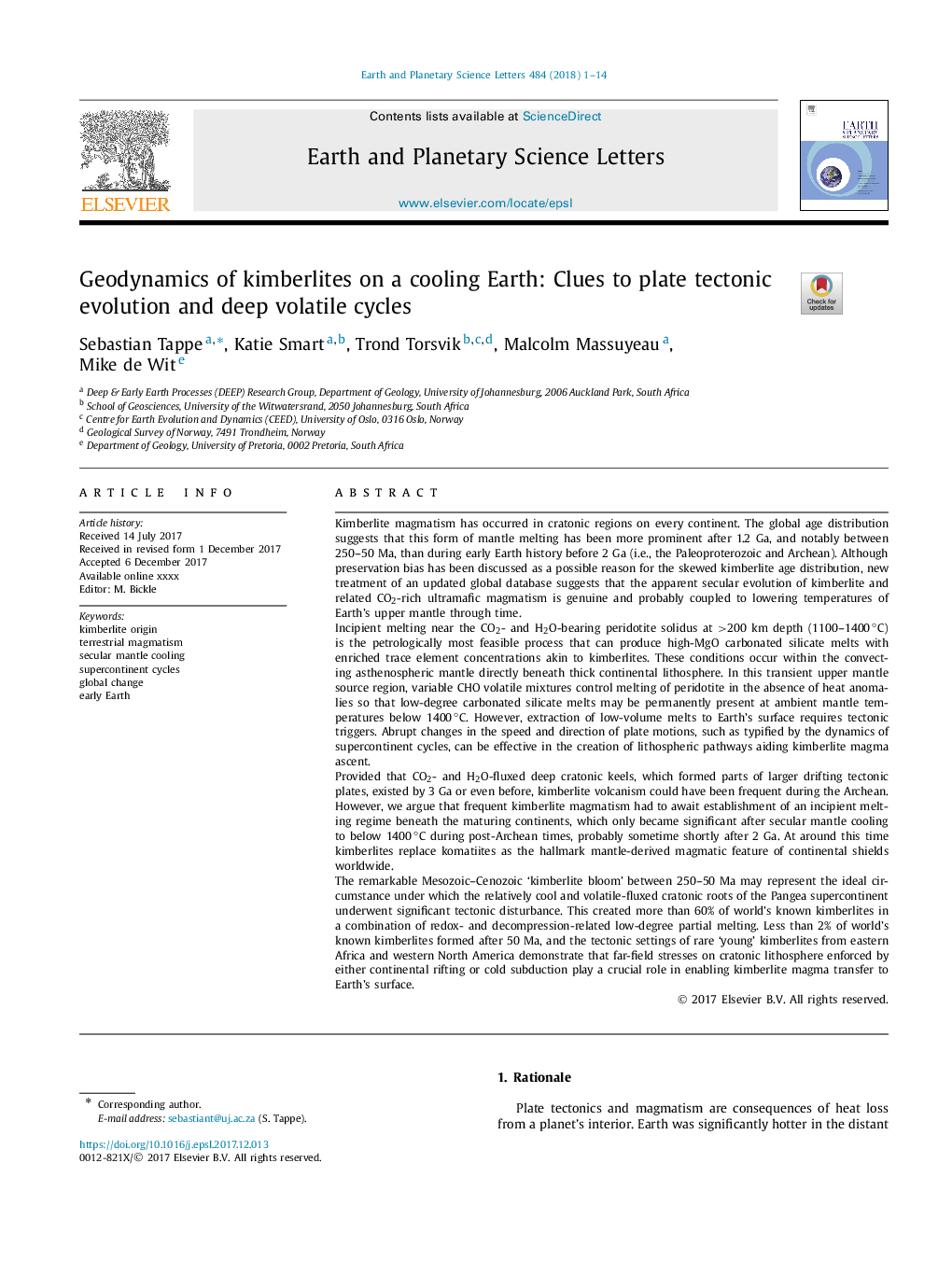| Article ID | Journal | Published Year | Pages | File Type |
|---|---|---|---|---|
| 8907133 | Earth and Planetary Science Letters | 2018 | 14 Pages |
Abstract
The remarkable Mesozoic-Cenozoic 'kimberlite bloom' between 250-50 Ma may represent the ideal circumstance under which the relatively cool and volatile-fluxed cratonic roots of the Pangea supercontinent underwent significant tectonic disturbance. This created more than 60% of world's known kimberlites in a combination of redox- and decompression-related low-degree partial melting. Less than 2% of world's known kimberlites formed after 50 Ma, and the tectonic settings of rare 'young' kimberlites from eastern Africa and western North America demonstrate that far-field stresses on cratonic lithosphere enforced by either continental rifting or cold subduction play a crucial role in enabling kimberlite magma transfer to Earth's surface.
Keywords
Related Topics
Physical Sciences and Engineering
Earth and Planetary Sciences
Earth and Planetary Sciences (General)
Authors
Sebastian Tappe, Katie Smart, Trond Torsvik, Malcolm Massuyeau, Mike de Wit,
